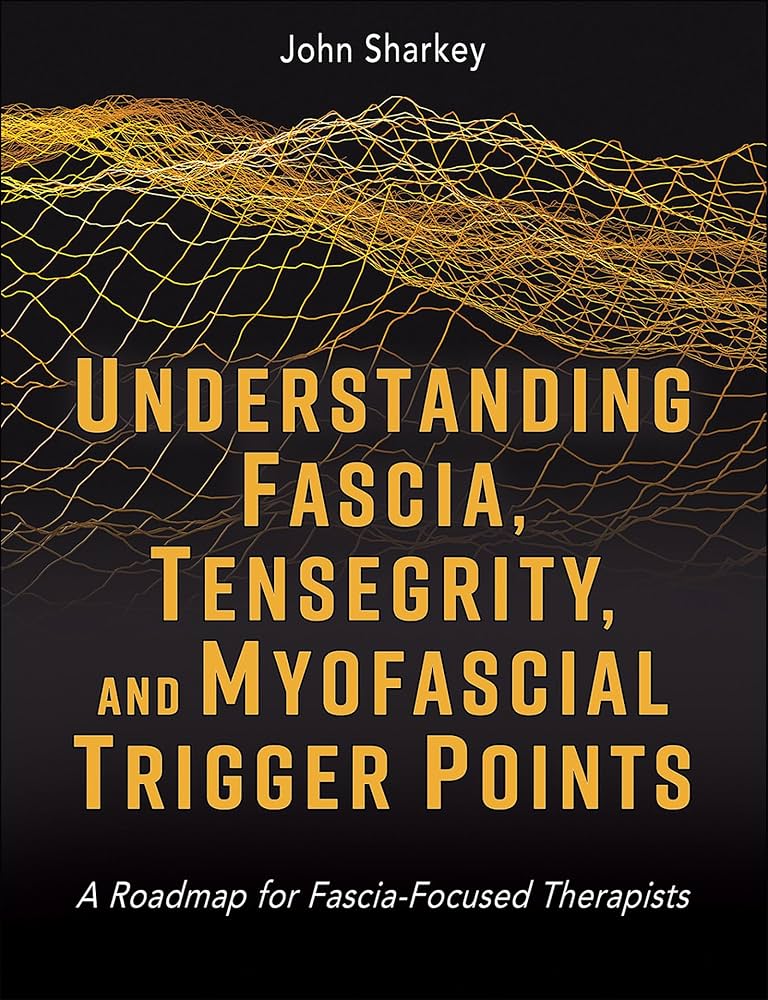
Review by Fran Philip - PAA member
After hours in the dissection lab, I’m often left reflecting on the incredible complexity of the human body—trying to connect what I’ve seen to the way I guide movement in the studio. John Sharkey’s new book, Understanding Fascia, Tensegrity, and Myofascial Trigger Points, offers a clear and practical framework for making those connections.
John organises the content into three clear and practical sections. First, theory—covering foundational anatomy, the principles of tensegrity (or “fasciategrity”), and how fascia’s structure and function contribute to integrated, whole-body movement. Second, practice—with a focus on myofascial trigger points: how to identify and understand them, and how this insight can guide more effective movement choices and adaptations in client sessions. Finally, the regional reviews offer detailed insights into major muscle groups, supported by anatomical illustrations and referred pain patterns—many of which help explain the restrictions and discomfort we commonly observe in clients. It’s an invaluable resource for anyone wanting to bridge deep anatomical understanding with fascia-informed, intelligent movement teaching.
As a Pilates instructor, here are where the book really shines and what I see as highly relevant:
1. Deepened Understanding of Fascia & Fasciategrity/Biotensegrity
Pilates is so much about alignment, flow, continuous lines of tension, core and peripheral connectedness. The book’s treatment of tensegrity (how tension and compression knit the body into a stable, responsive structure) is helpful for refining your cueing, for understanding how small deviations or restrictions in fascia can impact movement quality.
2. Trigger Point / Myofascial Awareness
Understanding where trigger points typically form, how they influence movement, and their pain referral patterns greatly improves our ability to observe and address clients’ issues. In Pilates, many clients present with discomfort or stiffness that isn’t purely structural but often myofascial in nature. This book offers valuable tools for identifying and managing these factors, helping to prevent compensations and promote healthier, more efficient movement patterns.
3. Practical Protocols & Assessments
The assessment and treatment protocols offer a clear, structured way to understand tension, pain referral, and related issues. Although Pilates instructors don’t typically perform hands-on therapy, these protocols provide valuable insights on what to observe, how to adjust exercises, and how to effectively integrate fascia-focused techniques—like self-myofascial release, stretching, and mobility work into our sessions.
4. Regional Reference Material
The section of the book that breaks down the body region by region (face and neck, trunk, limbs), complete with clear pain referral maps, is especially valuable. For Pilates instructors, this offers greater precision in identifying the source of discomfort—not just which muscle, but which fascial or myofascial region and helps us tailor programming to address those specific areas.
5. Rich Visuals & Digestible Layouts
For teaching, cueing, and learning, the quality visuals, summaries, tables and sidebars are great. They help translate complex anatomy into something usable.
There are also important considerations from a Pilates perspective: what works well, what might need supplementation, and potential drawbacks you may need to keep in mind.
6. Hands on vs Movement Focus
Much of the treatment material assumes hands-on manual therapy or trigger point release techniques, such as massage or direct work. If you’re primarily a movement instructor without manual therapy training, some of these methods may fall outside your scope. In that case, you’ll need to translate or adapt the concepts to fit your practice.
7. Complexity and Depth
Because the book is very thorough, some of the anatomical and physiological details can feel dense. If you’re a Pilates instructor without a strong background in anatomy or fascia science, certain sections might feel challenging. It may require you to invest extra time and effort, including reviewing foundational fascia and physiology concepts, to fully understand the material.
8. Risk of Over diagnosis or Over emphasis
There is sometimes a temptation to over attribute movement problems to trigger points or fascial restrictions. While valuable, these are only part of the picture. Factors like strength, motor control, neurological patterning, psychological & environmental context also matter. Pilates instructors using this knowledge need to balance with overall assessment and avoid “blaming fascia” for everything.
9. Time constraints in class settings
Applying assessments, trigger point work, or in-depth self-release and mobility techniques can be time-consuming. In group classes or shorter private sessions, it’s often not feasible to cover everything. That’s why selecting what’s practical and effective is essential. In my teaching approach, I include targeted self-release work at the start of each class or private session to lay the foundation for improved movement quality throughout our time together.
Here are some ideas for how this book might shift or enrich your work with clients:
- When designing movement sequences, consider integrating fascial line principles—such as the superficial back line, front line, and other myofascial chains—to support balanced tension and compression throughout the body. This approach is especially valuable for clients who spend most of their day seated, as it helps counteract habitual postural imbalances and restores more functional, integrated movement.
- Use pain referral maps to better listen to client feedback of pain or soreness and trace it back to possible myofascial origins rather than treating symptoms only.
- Include guided self‑myofascial release or trigger‑point rolling / release (foam roller, balls) as part of warm‑ups or cool‑downs to prepare or recover fascia, improve mobility, reduce risk of trigger point development.
- Modify or regress/advance Pilates exercises depending on fascia tightness or fascial restrictions. For example, adjust range of motion, use props, or adjust tempo to allow fascia to “unwind” or adapt rather than purely pushing through stiffness.
- Help clients build awareness around posture and tension—how chronic holding patterns or stress can contribute to fascial adhesions and trigger points. Even something as common as elevated shoulders can signal deeper imbalances. Teaching simple daily movements or stretches can go a long way in unwinding these patterns and supporting long-term mobility and ease.
I would rate this book very positively for Pilates instructors who want to deepen their anatomical literacy, improve the therapeutic or corrective side of their teaching, and better understand how fascia & trigger points affect movement, posture, and pain.
It’s not a light read, nor is it solely Pilates-specific, so you’ll likely need to extract and adapt the material. However, for instructors eager to go beyond the basics of “core, alignment, and breath” and deepen their understanding of fascia science, this book is a valuable resource.
Fran Philip
PAA Pilates Practitioner Principal member

Comments are closed.